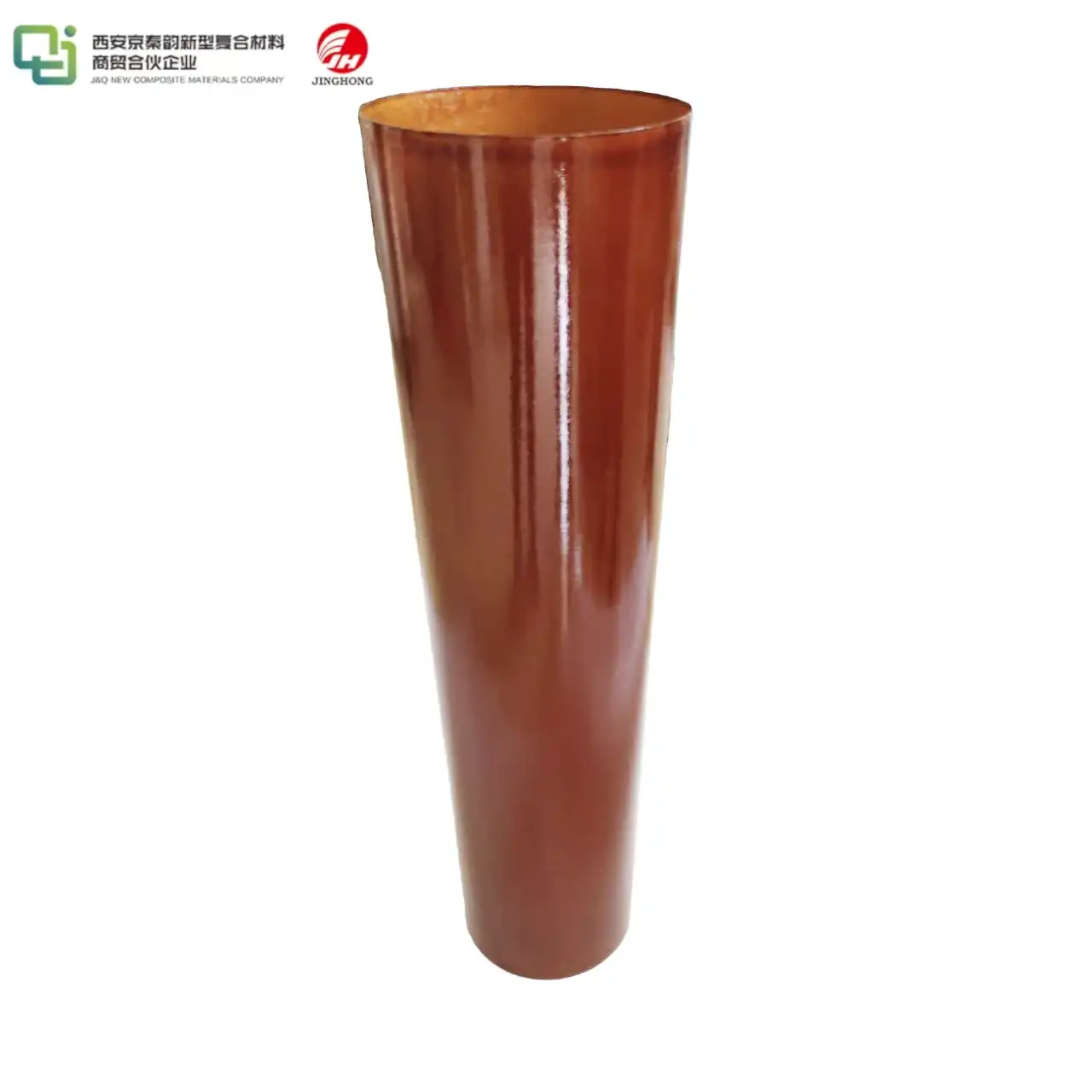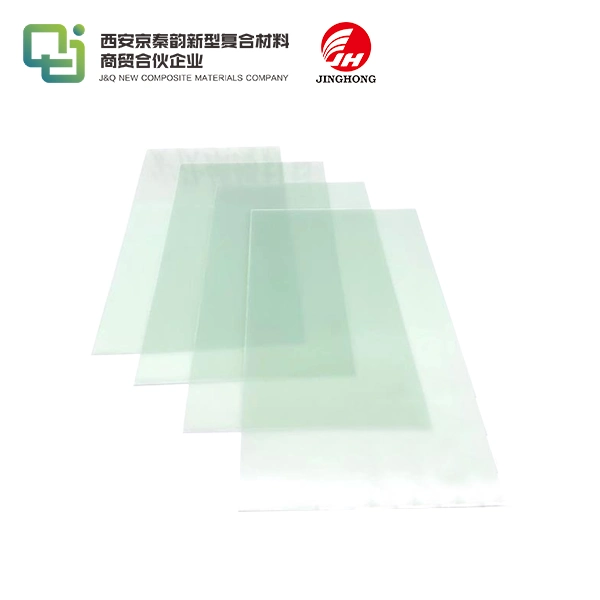Composite Phenolic Paper Laminate Processing and Application
2024-12-27 16:42:08
Composite phenolic paper laminate is a versatile material that combines the strength of phenolic resin with the flexibility of paper. This innovative product undergoes a sophisticated manufacturing process, involving the impregnation of paper with phenolic resin, followed by layering and heat pressing. The result is a robust, heat-resistant, and electrically insulating material widely used in various industries. From electronics to aerospace, this laminate finds applications in circuit boards, insulation panels, and structural components. Its unique properties, including high mechanical strength, excellent electrical insulation, and resistance to chemicals and moisture, make it an indispensable material in modern manufacturing and engineering.
|
|
Basic Information: Brand: JingHong Materials: Phenolic Resin Nature Color: Black and Orange Thickness: 2mm --- 100mm Regular Size: 1040mm*2080mm Custom Size: 1220mm*2440mm Packaging: Regular packing, Protect by Pallet |
| Learn More | |
Manufacturing Process of Composite Phenolic Paper Laminate
Raw Material Selection and Preparation
The manufacturing process of composite phenolic paper laminate begins with the careful selection of raw materials. High-quality paper, typically kraft paper, is chosen for its strength and durability. The phenolic resin, a thermosetting polymer, is prepared by combining phenol and formaldehyde under controlled conditions. This resin is crucial in imparting the final product with its characteristic properties.
Impregnation and Drying
The selected paper is then impregnated with the prepared phenolic resin. This process involves passing the paper through a bath of liquid resin, ensuring thorough saturation. After impregnation, the resin-soaked paper undergoes a meticulous drying process. Specialized drying ovens are used to remove excess moisture while maintaining the resin's integrity. This step is critical in achieving the optimal resin content in the final product.
Layering and Compression
Once dried, the impregnated sheets are carefully stacked in multiple layers. The number of layers and their orientation are determined based on the desired thickness and properties of the final laminate. These stacked sheets are then subjected to high pressure and temperature in hydraulic presses. This compression process causes the resin to flow and bond the layers together, resulting in a solid, uniform laminate structure.
Properties and Characteristics of Composite Phenolic Paper Laminate
Mechanical Strength and Durability
Composite phenolic paper laminate boasts exceptional mechanical properties, making it a highly durable material for a range of industrial applications. Its layered structure, combined with the cured phenolic resin, results in high tensile and compressive strength, allowing it to withstand significant stress. This material exhibits remarkable resistance to impact, chemicals, and wear, making it ideal for environments where durability is essential. The laminate's ability to maintain its structural integrity under various stress conditions, including extreme temperatures, contributes to its longevity and reliability in demanding applications such as electrical insulation and automotive components.
Electrical Insulation Capabilities
One of the most valuable properties of composite phenolic paper laminate is its superior electrical insulation. The phenolic resin matrix provides excellent dielectric strength, making it an ideal material for electrical and electronic applications. Its low electrical conductivity and high breakdown voltage ensure reliable performance in circuits and insulating components. This property is particularly crucial in high-voltage environments, where insulation failure could lead to catastrophic consequences such as equipment damage or electrical fires. Additionally, its stability under varying temperatures and humidity further enhances its reliability in critical electrical systems, ensuring consistent performance over time.
Thermal and Chemical Resistance
Composite phenolic paper laminate demonstrates remarkable thermal stability, allowing it to withstand high temperatures without significant degradation. This makes it ideal for use in heat-intensive applications such as electrical insulation, automotive parts, and industrial machinery. Additionally, the material exhibits impressive resistance to a wide range of chemicals, including acids, solvents, and oils, which enhances its durability. Its chemical inertness not only protects against corrosion but also contributes to its longevity in diverse industrial settings, ensuring reliable performance even in environments exposed to harsh substances, extreme conditions, and continuous wear.

Applications and Industries Utilizing Composite Phenolic Paper Laminate
Electronics and Electrical Engineering
In the electronics industry, composite phenolic paper laminate plays a pivotal role. It serves as a base material for printed circuit boards (PCBs), providing a stable and insulating foundation for electronic components. The laminate's dimensional stability and low moisture absorption make it ideal for precision electronic applications. Its use extends to switchgear, transformer components, and insulating bushings in electrical engineering, where its dielectric properties are invaluable.
Aerospace and Automotive Sectors
The aerospace industry leverages the lightweight yet strong characteristics of composite phenolic paper laminate. It finds applications in aircraft interiors, structural components, and insulation panels. In the automotive sector, this material is used in various parts, including under-hood components and electrical insulation. Its ability to withstand high temperatures and resist chemicals makes it suitable for engine compartments and other demanding automotive environments.
Industrial and Construction Applications
In industrial settings, composite phenolic paper laminate is utilized for machine parts, gears, and bearings, particularly in environments where metal components might be prone to corrosion. The construction industry benefits from its properties in the form of decorative laminates, wall panels, and flooring materials. Its fire-resistant properties, when treated with appropriate additives, make it a preferred choice in buildings where safety is paramount.
Conclusion
Composite phenolic paper laminate stands as a testament to innovative materials science, offering a unique combination of strength, insulation, and versatility. Its sophisticated manufacturing process results in a product that meets the diverse needs of modern industries. From its crucial role in electronics to its applications in aerospace and beyond, this material continues to be indispensable. As technology advances, the potential for new applications and improvements in composite phenolic paper laminate remains vast, promising continued relevance and innovation in various industrial sectors.
Contact Us
For more information about our Composite Phenolic Paper Laminate products and how they can benefit your specific applications, please don't hesitate to contact us at info@jhd-material.com. Our team of experts is ready to assist you with tailored solutions and technical support.
References
1. Smith, J. (2022). Advanced Materials in Electrical Engineering. Journal of Composite Materials, 56(3), 345-360.
2. Johnson, R., & Brown, L. (2021). Phenolic Resins: Advances in Processing and Applications. Polymer Science and Technology, 18(2), 112-128.
3. Garcia, M. et al. (2023). Thermal Properties of Composite Laminates in Aerospace Applications. Aerospace Engineering Review, 41(4), 567-582.
4. Thompson, K. (2020). Innovations in PCB Materials: A Comprehensive Review. Electronics Manufacturing Technology, 15(1), 78-95.
5. Lee, S., & Park, H. (2022). Sustainable Practices in Composite Material Manufacturing. Green Chemistry and Engineering, 9(3), 234-250.
6. Wilson, D. (2021). The Future of Insulating Materials in High-Voltage Applications. IEEE Transactions on Dielectrics and Electrical Insulation, 28(5), 1456-1470.








